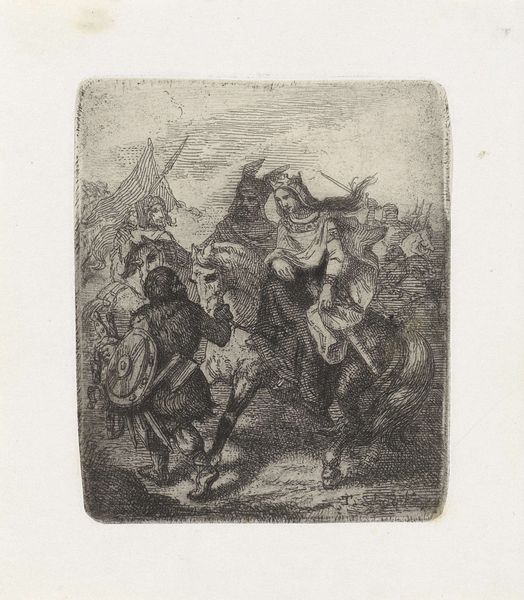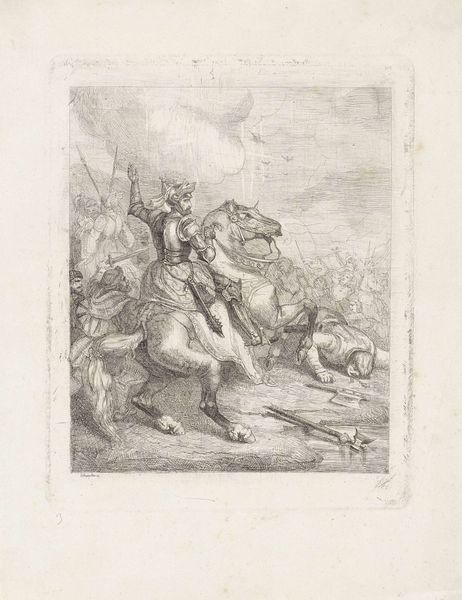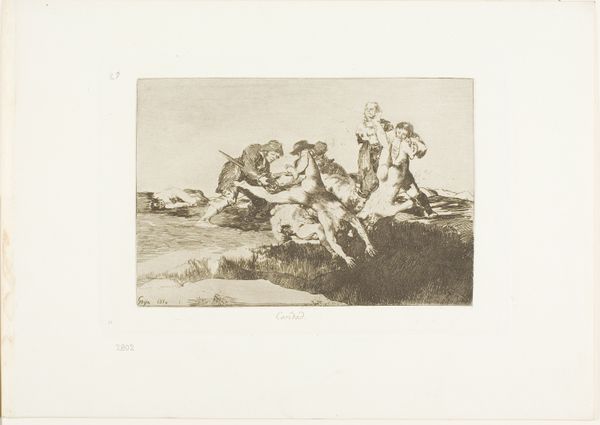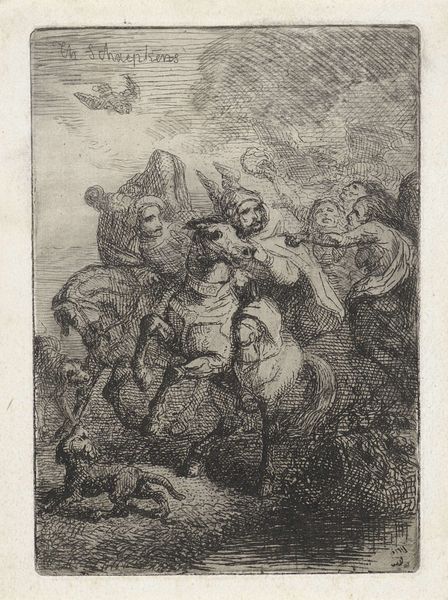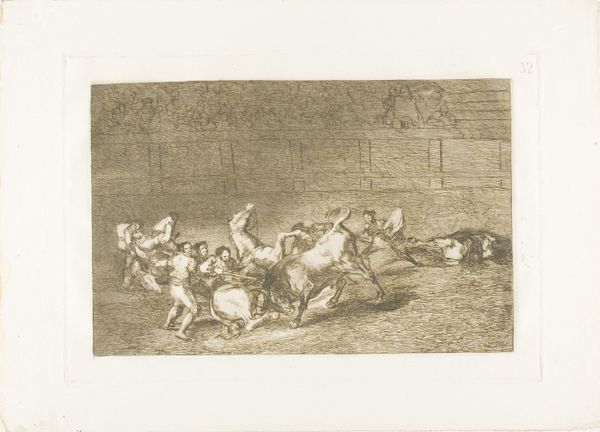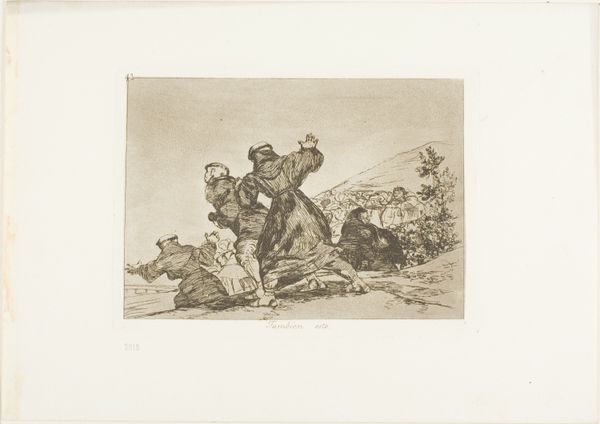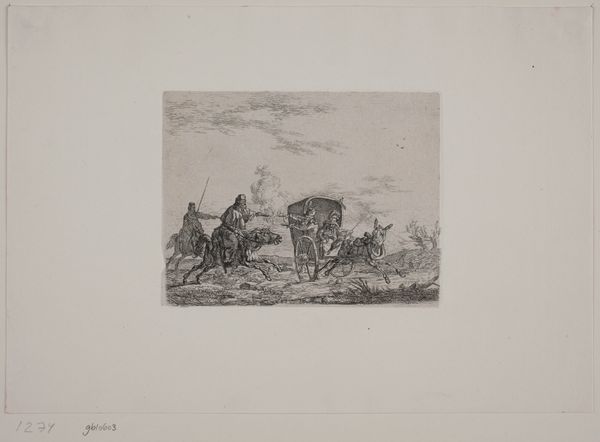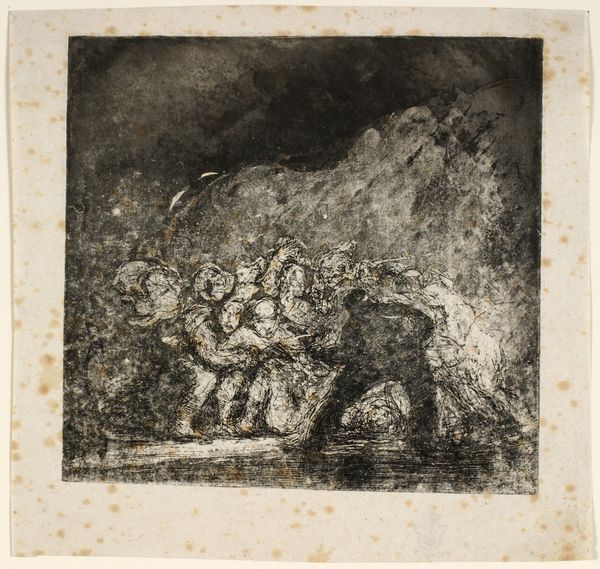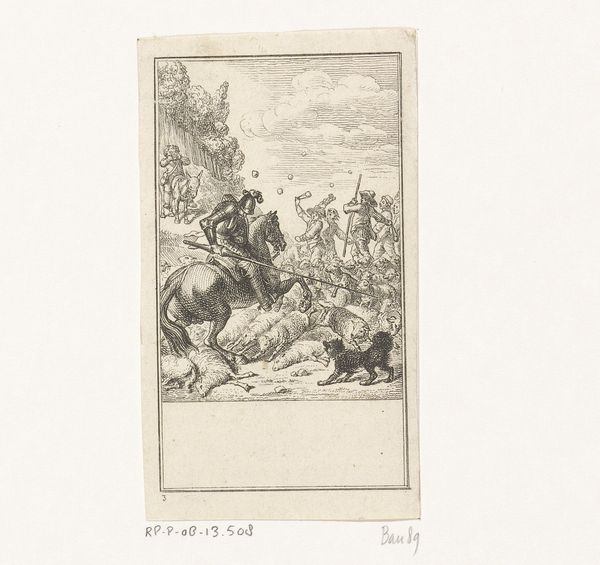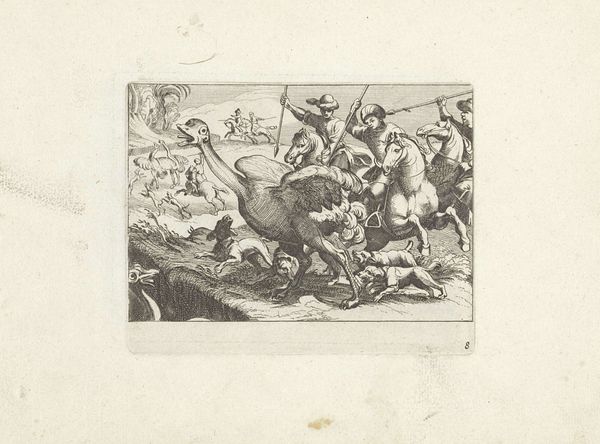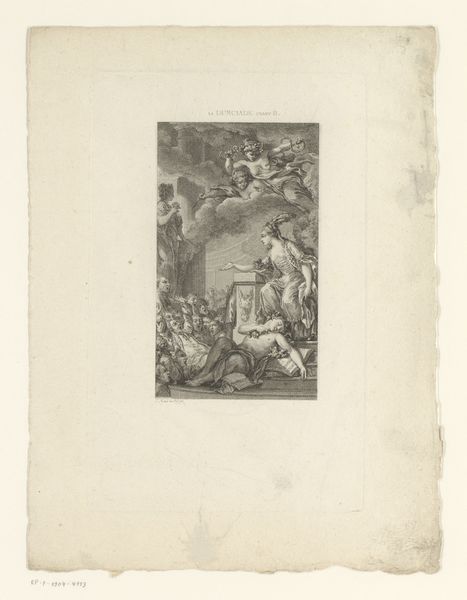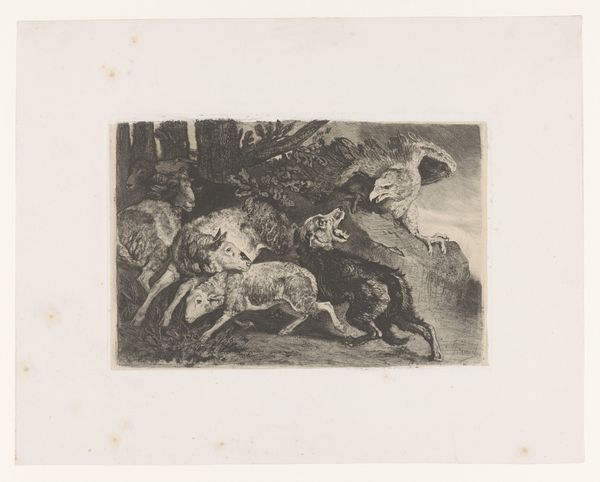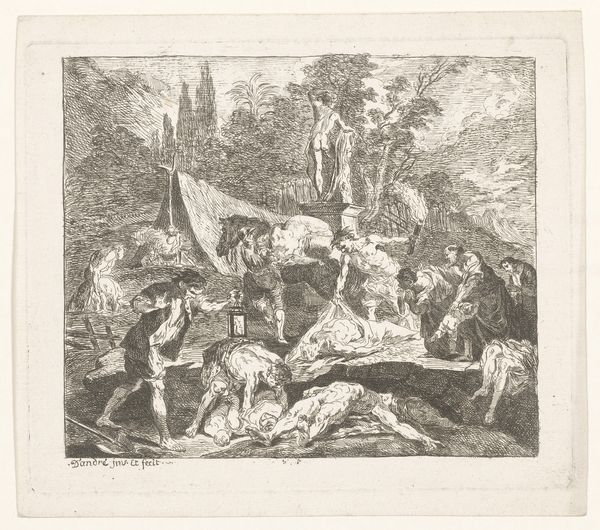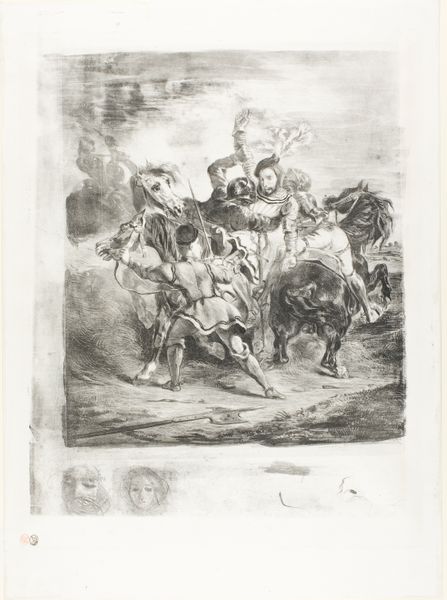
Dimensions: height 257 mm, width 209 mm
Copyright: Rijks Museum: Open Domain
Editor: So this is "Keizer Hendrik II de Heilige te paard in een veldslag," or Emperor Henry II the Holy on Horseback in Battle, created in 1835 by Theodoor Schaepkens. It’s an engraving, so it's all in black and white, and pretty detailed. It depicts a battle scene, and it's just packed with figures! What visual echoes do you find in this work? Curator: Well, immediately the central figure on horseback draws the eye. Notice how Schaepkens uses Henry II, crowned in armour, as more than just a portrait? The figure looms large in cultural memory, linking him to the romanticised image of the holy warrior king. That raised arm--do you think it references anything in particular? Editor: Possibly him signalling his troops forward? It creates a sense of urgency and motion, definitely! Curator: Precisely! But consider also the echoes of classical Roman equestrian statues - think of Marcus Aurelius. This image taps into a well-worn symbolic language of leadership, power, and divine right. The surrounding chaotic battle serves to emphasize the central figure's strength and resolve. How does that interplay of chaos and order resonate with you? Editor: It’s a strong contrast, setting the scene but almost idolising Henry at the same time. So he’s using the battle as more of a symbolic stage? Curator: Exactly! It’s as much about the *idea* of Henry as a saintly emperor as it is about any specific historical battle. We have centuries of ingrained imagery associating the rider with courage, duty and a bit of propaganda, don’t you think? What sticks with you after looking at this piece? Editor: I see it’s a story of power beyond the mere illustration of war. Thank you! Curator: Indeed! We are forever in dialogue with inherited meanings when we gaze upon an image. It can truly alter our perceptions of events in history and how we interpret them.
Comments
No comments
Be the first to comment and join the conversation on the ultimate creative platform.
